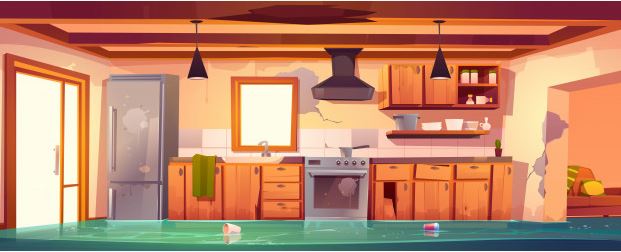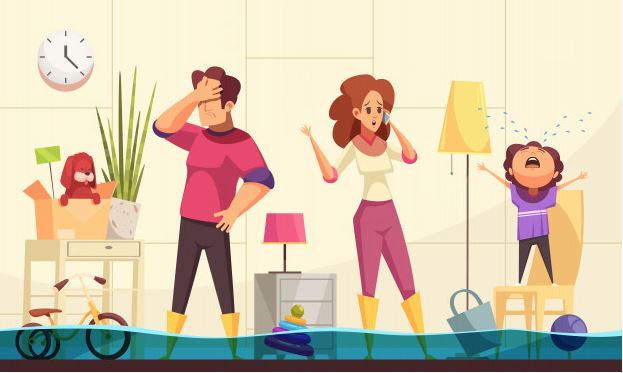
We often witness accidents that lead to water damage in our home or business premises. Certain factors that usually lead to water damage are appliance malfunction, plumbing failure, seepage, roof damage, etc.
As soon as you encounter any water damage, you must look for its source and remove the accumulated water. If you don’t have any experience, this can be a very time-consuming and painstaking task. In such cases, the best approach is to contact a water damage expert; they can manage your situation in just a few hours.

Steps to follow dry your home:
1. Move the air in the home naturally
If the humidity of the room is under control, open the doors and the windows to allow cross-ventilation, so that air starts circulating inside the room. Open the doors of the closets, cabinets, wardrobes and remove the drawers so that they get exposed to the air and dry quickly.
2. Mechanical Measures for allowing Air Circulation
You can take additional measures like buy or rent high power fans to uplift the air circulation. Depending upon the dimensions of your room, you may get a sizable suitable fan or multiple fans. If any of the wire was exposed to water, do not switch on the central air conditioning system, it may cause short circuit or fire.
3. Thorough Dehumidification
Get a portable dehumidifier from the nearest restoration company; if you cannot buy, just rent one! One by one, place the dehumidifier for a few hours in each area exposed to water damage like the bedroom, kitchen, staircase, living room, etc. Once the dehumidifier tank is full, empty it so that it can absorb more moisture. Make sure that the doors and windows are closed to avoid additional moisture from getting in. Get multiple dehumidifiers; if a large number of rooms are water damaged, to allow parallel dehumidification.
4. Pump Water with a Sump Pump
If the accumulated water cannot be removed with the help of a bucket or wiper, you need a sump pump with battery backup. A sump pump uses a submersible pump that continuously throws water out of the house with the help of a hose or pipe. It is very easy-to-use if the depth of the collected water is shallow.
5. Use Vacuum Cleaners
If area rugs or carpets are wet, you can use specialized vacuum cleaners to drain water hey from them. Do not use ordinary vacuum cleaners for sucking water, because it is highly prone to short-circuits and reduces the durability of the rugs.
6. Remove Drenched Articles
Keep the wet rugs, bed sheets, mattresses, blankets, etc. out in the sunlight so that the absorbed water evaporates due to the sun’s heat.
7. Keep Papers in the freezer
Put the wet books and papers in a polythene sheet and store them into the freezer for a few hours. This process will restrict mold and mildew growth and further disintegration of the books and the papers. After one or two days, take them out and keep them under the fan for some time.
8. Moisture Absorbents
You can use desiccants such as silica gel, clay, calcium oxide, and so on. These desiccants can absorb a very high amount of moisture in just a few seconds. Place these desiccants into bounded regions like closets, cupboards, drawers. Some of these may get saturated soon; you can note the color change for knowing the level of saturation.
Final Thoughts
All the steps, as mentioned above, require a lot of patience and effort; some even need specialized equipment. If you want prompt assistance, contact the nearest water damage company.

